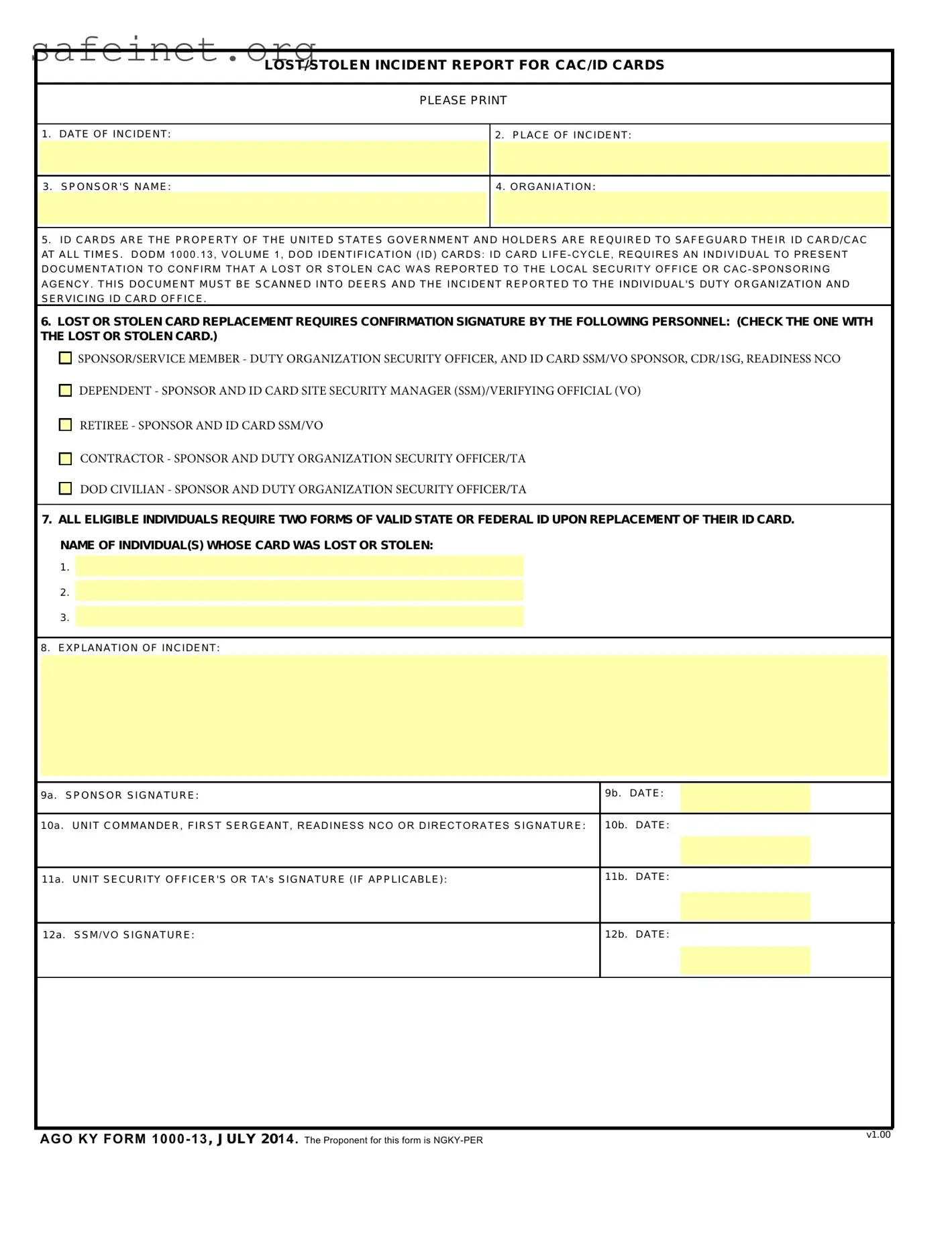The Form DD 200, also known as the Financial Liability Investigation of Property Loss, shares similarities with the FH 7006 form by requiring individuals to document instances where property has been lost or stolen. Like the FH 7006, the DD 200 necessitates a comprehensive report detailing the circumstances surrounding the incident. Individuals filing this form must provide pertinent information regarding the incident location and date, as well as the individuals involved in the loss of property. In both cases, the completion of a formal report is essential to facilitate the replacement of the lost item and to address any financial liabilities that may arise from the loss.
The SF 95, the Claim for Damage, Injury, or Death, is another document that bears a resemblance to the FH 7006. This form, which is used to claim compensation for damage or injury, requires a detailed description of the incident leading to the claim, much like the explanation required on the FH 7006. Both forms are designed to ensure an accurate account of the events, ultimately aiding in proper liability assessment and resolution. The SF 95 highlights the accountability of the individual involved in the claim process, paralleling the responsibilities outlined in the FH 7006 concerning lost or stolen identification items.
Similarly, the Form SF 117, commonly known as the Security Incident Report, functions in a comparable way to the FH 7006 in terms of documenting security breaches or lost items. This form requires individuals to outline the specifics of the security incident with an emphasis on prevention and future safeguarding measures. The thorough investigation process for both forms aims to promote security and accountability within organizations, thereby underscoring the importance of reporting in a timely and detailed manner to mitigate risks associated with loss.
The DA Form 2823, a Sworn Statement form, serves a similar purpose to the FH 7006 by capturing firsthand accounts of incidents that require formal documentation. This form is often utilized during investigations and requires the declarant's signature affirming the truthfulness of the statement, paralleling the signature requirements found on the FH 7006. Both documents emphasize the significance of truthful reporting in a formalized manner, which can lead to appropriate action taken following a lost or stolen item event.
Furthermore, the Form 3280, the Loss of Accountable Items form, addresses a similar situation as the FH 7006 by requiring information related to an accountable item that has been lost or stolen. This form demands a detailed explanation of the circumstances surrounding the loss, similar to the FH 7006's requirement for an incident explanation. Both forms aim to assist in tracking lost items, ensuring organizational integrity and the adherence to protocols regarding property management.
Lastly, the DD Form 1610, the Request and Authorization for Temporary Duty (TDY) Travel of DOD Personnel, relates indirectly to the FH 7006 in the context of travel management and responsible safeguarding of credentials. While the main focus of the DD 1610 is to authorize travel, it also acknowledges the importance of maintaining security clearances, which can be jeopardized by a lost or stolen ID card. Both forms highlight the crucial role of personal responsibility in managing sensitive documentation, reinforcing the necessity of reporting losses and seeking replacements in a structured manner.

